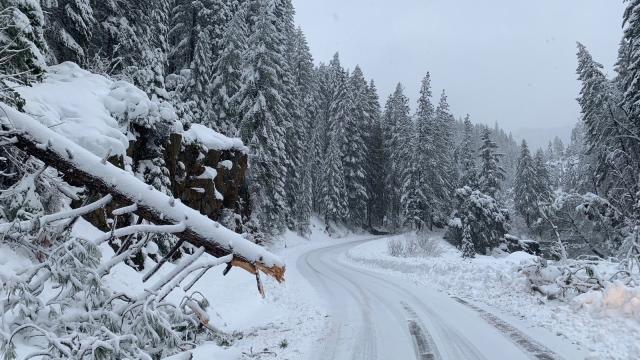This December is already one of the snowiest ever in the Lake Tahoe region, with 202 inches having fallen in the month so far as of Tuesday. Naturally, bad weather results in road closures. But modern navigation software simply doesn’t take no for an answer, and so Google Maps — among other navigation companies — has sent drivers down sketchy, dangerous paths to reach their intended destinations, as SFGate reported yesterday.
Travel around the area has, quite simply, been a clusterfuck this week. On Monday, sections of I-80 were closed, prompting Google Maps to recommend alternate routes that local government and individuals familiar with the area warned were not viable options:
The same can be said for Henness Pass. Please don’t try to take Henness Pass. If your GPS tells you to take it, ignore your GPS, it’s not going to happen.
Check the CalTrans Quickmap (https://t.co/GTAsbUp0Id) and follow our local @CaltransDist3 for the best road updates. https://t.co/Oqy7THFJrt
— USFS Tahoe NF (@Tahoe_NF) December 27, 2021
Those options are essentially unkempt mountain roads that become extremely dangerous in instances of extreme weather.
UC Merced pyrogeographer Dr. Crystal A. Kolden called Google Maps’ response — or lack thereof — to the weather in Lake Tahoe “an abject failure” on Twitter:
.@googlemaps This is an abject failure. You are sending people up a poorly maintained forest road to their death in a severe blizzard. Hire people who can address winter storms in your code (or maybe get some of your engineers who are stuck in Tahoe right now on it). pic.twitter.com/IzagAXzBtA
— Dr. Crystal A. Kolden 🔥 (@pyrogeog) December 28, 2021
Clearly this isn’t a new problem, and if you’ve driven at all in the last decade, you’ve likely experienced it. Weather or traffic’s bad, your usual route is closed and Google Maps, Waze, Apple Maps or another app tells you to take a different road to circumvent the jam. At which point you very quickly realise why you’ve never gone this way before and decide you never will again.
But events like what’s going on in Lake Tahoe represent the perfect storm — no pun intended — of a free service that is determined to always find a way to reassure or placate the end user, even when no such way exists. At least, not a safe one.
Sören Meyer-Eppler, a tech lead at Google who says he’s “worked on this problem” before, shed some light on the difficulty of tackling these challenges. He brings up good points — notably the trouble of trying to determine what constitutes safe passage for a road that is technically open but covered in snow:
Maybe? That would introduce a third state compared to just road open/closed. It would require new UI affordances (while driving!). And triggering is anything but obvious.
— Sören Meyer-Eppler (@BuschnicK) December 28, 2021
But Google is also a company that collects and relies on colossal vats of data to answer questions we once believed couldn’t be answered and to make strides in pursuits like self-driving cars that seemed fanciful 15 years ago. “Introducing a third state” — something like “proceed with caution” or, as the individual above suggests, “inform locally” — and developing the UI affordances for such a function is something Google could do. It just hasn’t done it yet, maybe because it doesn’t want to concern itself with the icky legal grey areas of telling someone they might die if they go a particular way, or maybe because fewer people live in the mountains versus urban centres, so it’s not a top priority.
This seems like an unnecessary quip. Google spends vast amounts of money on maps and feedback is not ignored. For the specific issue of mountain passes one of the PMs (a Swiss person, go figure) cared very strongly about getting it right.
— Sören Meyer-Eppler (@BuschnicK) December 28, 2021
Questioning the duty of firms in Google’s position is anything but an unnecessary quip. In fact, it’s something we should expect and demand of all the services we rely on to go about our lives. If Google thinks it doesn’t have a responsibility to do right by its users, especially concerning a task like driving — likely the most dangerous thing the vast majority of us do on a regular basis — it shouldn’t be playing in those spaces, end of story.
